Under pressure from Hitler and Mussolini, the jury members at the Mostra changed the award winners a few hours before announcing the official results in favour of a Nazi propaganda documentary. Shocked by these events, the French diplomat and historian, Philippe Erlanger, had already begun thinking about organising a free festival, with no pressure and no constraints. This idea became official when he received approval from the French Ministry of Education at the time, Jean Zay. The International Film Festival opened in Cannes on 1 September 1939, at the same time as the Venice Film Festival.
The original aspect of the event was emphasised: each country would select a film to be proposed for the competition. France did not want to create further tensions and decided to invite all filmmaking nations, including Germany and Italy which turned down the invitation.
Crisis was building in the summer of 1939; German military operations changed the face of Europe, and only nine countries agreed to take part in the first Festival.
France also wanted to do as well as Italy, giving its Festival an equally prestigious setting. Cannes and Biarritz were included in the list of some ten French cities. There were rumours that Cannes was going to win but, in a dramatic turn of events, it was announced on 9 May 1939 that Biarritz had been chosen as the Festival’s home. Cannes’s supporters got back to work and ended up winning the competition by offering to increase the municipality’s financial participation. Thus, on 31 May 1939, the city of Cannes and the French government signed the International Film Festival’s official birth certificate.
The first Festival in 1939 was supposed to be held from 1 to 20 September 1939 in an auditorium at the Municipal Casino.
The first festival-goers arrived in August, taking part in sumptuous parties. The painter Jean-Gabriel Domergue produced the official poster for this first festival. But with the increasingly threatening clouds of war, they fled. On 1 September, German troops invaded Poland. The festival was postponed for 10 days, but the situation only worsened. War was declared on 3 September and general mobilisation was declared, making it impossible for the festival to go on. A single screening was organised – privately – of the American film Quasimodo by William Dieterle, for whose promotion a cardboard replica of Notre Dame Cathedral in Paris was built on the beach.
The International Film Festival was born in the heady atmosphere of the end of World War II, marking the beginning of a major episode in world cinema.
Back in July of 1945, in a France devastated by the war, Philippe Erlanger – who was at the origin of the first, aborted initiative – put the idea forward again to the new director of French cinematography. But the French State and the municipality of Cannes could no longer afford such an expense. The necessary funds were raised through a public subscription, making this first festival possible.
In September 1946, in a festive atmosphere and despite a series of technical problems, this first festival kicked off a long golden era that made Cannes and its festival the place to be for all filmmaking countries.
The first Cannes Film Festival introduced the entire world to Italian cinema and its neorealism. The rise of a new generation of filmmakers was not to the liking of the people at the Ministry who were in charge of making the selections, but films by these young auteurs quickly gained ground. The Festival contributed to the discovery of cinemas that were relatively unknown in Europe, although there were doubts as to the jury’s objectivity, given certain diplomatic agreements.
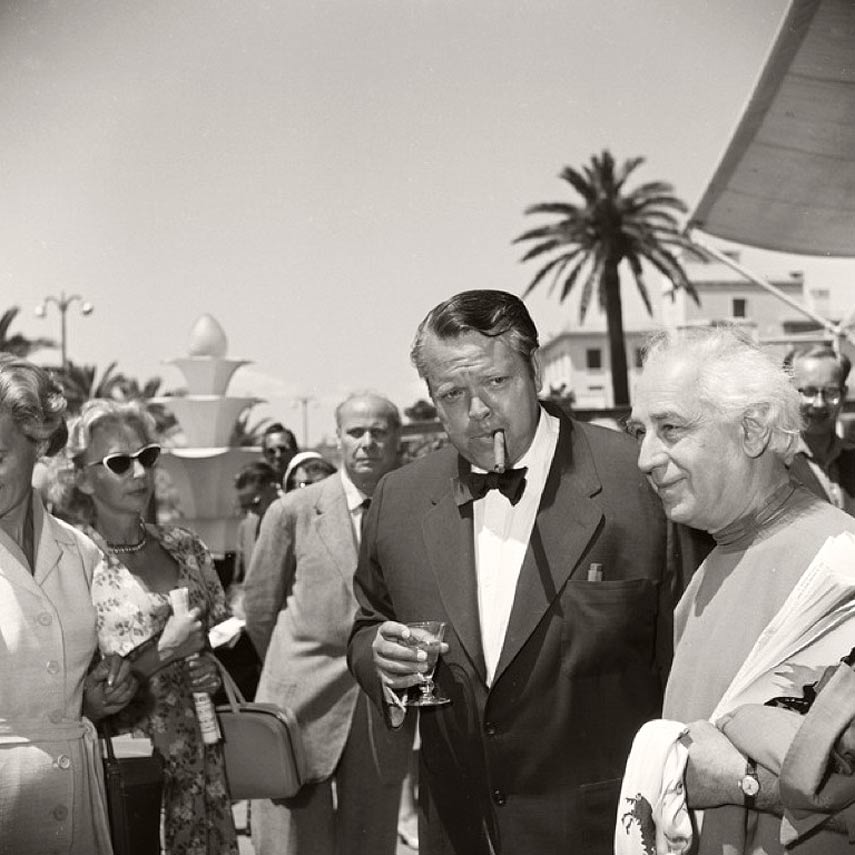
Orson Wells and Abel Gance - 1955 - © Traverso
The war was over, and it was time for cooperation and renewed exchanges. Many international cinematographic events were organised and, for a time, filmmaking countries took part in all these competitions so as not to offend the organisers. But, very quickly, the situation deteriorated and amongst all these festivals, the Cannes Film Festival had to make a name for itself.
Throughout this decade, the International Film Festival took off, and hundreds of journalists attended. Celebrities as well.
The post-war international harmony gave way to a new crisis situation. East and West were at odds on just about everything and the threat of a new conflict arose at the same time as the threat to the survival of international events like the Cannes Film Festival. The Americans, thanks to their financial assistance, received special treatment, which was not to the liking of other countries, notably those of the Eastern Bloc.
To avoid problems in choosing the selections, an article allowed films to be withdrawn under certain conditions. But this measure, designed to smooth things over, quickly became another divisive issue.
In 1956, the decision was taken to eliminate censorship, and a new era dawned for the Cannes Film Festival.
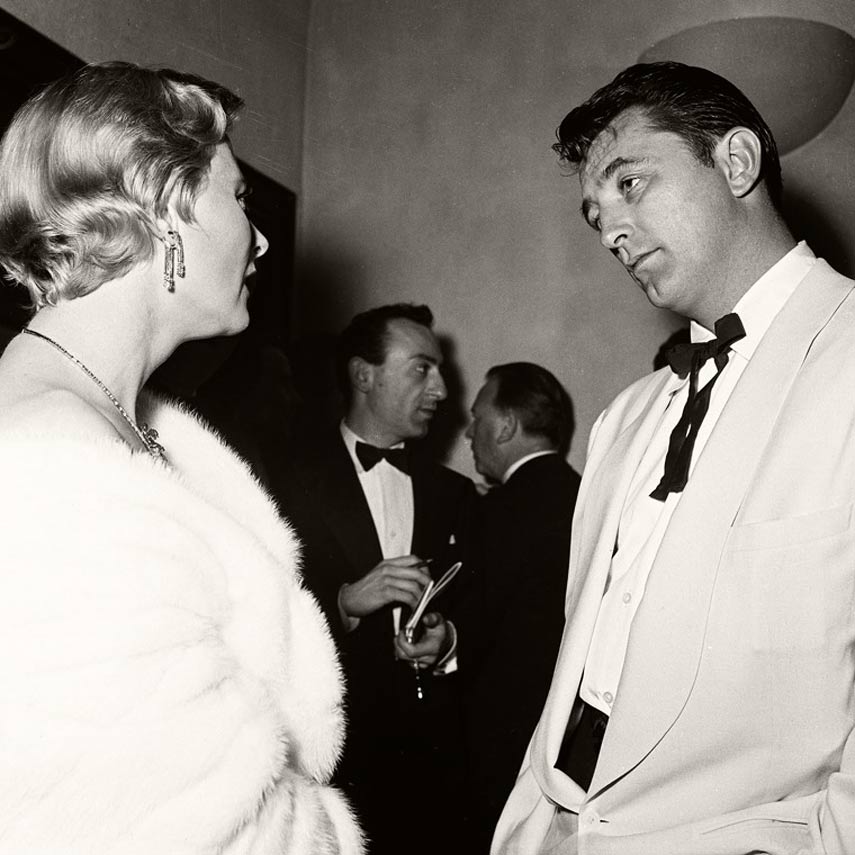
Michèle Morgan and Robert Mitchum - 1955 - © Traverso
In 1954, the first scandals erupted with the affair of the young British actress Simone Silva, who was photographed topless with Robert Mitchum at a picnic on the Lérins Islands.
All the foreign delegations complied with the customs of Cannes: after watching the films, they attended parties that sought to outdo each other in terms of their originality. Those organised by Unifrance Film left their mark on everyone’s memories. It was at this time that the Palais set up a stand with photos of actors and directors. Brigitte Bardot, who quickly became a role-model, was discovered at Cannes, also amplifying the Cannes phenomenon. The films selected met with unequalled commercial success.
France’s transition from the 4th Republic to the 5th was not easy, and it nearly brought down the young Cannes Film Festival. At the start of the 5th Republic, André Malraux became the International Film Festival’s organiser. He was also the Minister of Cultural Affairs. He gave a new dimension to the competition and let the younger generations express themselves.
Malraux’s selections were not always uncontroversial, but he imposed a film that led to one of the biggest French scandals of the decade, Jacques Rivette’s La Religieuse (The Nun).
In 1959, André Malraux, in agreement with Robert Favre Le Bret (the Festival’s Delegate General), formalised the Film Market. This market moved into the Palais, asserting its role in developing the film industry. The International Film Market has grown each year and today is the largest event in the film industry worldwide.
This market did not make everyone happy, notably those who judge films (cinema critics). In 1961, the Association Française de la Critique du Cinéma (French Syndicate of Cinema Critics) was founded, with Georges Sadoul as President. Thanks to this organisation, the International Critics’ Week was born and was incorporated directly into the Festival organisation, but it is held outside the Palais.
Since its creation, the Cannes Film Festival has seen quite a few scandals due to the choice of the film selected, for various reasons. For example, in 1960, Federico Fellini’s La Dolce Vita, was considered pornographic by some people. This film was controversial at the Vatican, which threatened to excommunicate anyone who saw it.
But there was also Luis Buñuel’s film Viridiana, which criticised religion and its deviations. Franco’s Spain tried to censor it, but the director sent the film anyway, which led to his being forbidden from returning to his country.
France was overcome by a deep social malaise. The demonstrations started in and around Paris, and clashes with the police grew more intense. The crackdown was reinforced in the night of 10 to 11 May, leading to the country’s total paralysis. Despite the shockwaves that submerged the country, the Cannes Film Festival began on 11 May and was supposed to continue to 25 May. A much-awaited restored version of the famous Gone with the Wind was scheduled to be shown. The following days, Eddie Barclay’s amazing parties provided a bit of light-heartedness amidst the national crisis. On 18 May, Cannes was in full festival mode and also became a centre for meetings and debates. Directors and producers called for the Festival to be shut down. After negotiations and incidents, they got their way on 19 May 1968 at noon. The Palais immediately emptied out.
Directors’ Fortnight (La Quinzaine des Réalisateurs) began in 1969 alongside the Festival to meet the new need to present works corresponding to the ideas of May 1968, eliminating ideological constraints and representing of world cinema. The Fortnight was a major evolution for the Festival, giving new directors an opportunity to make their work known.
This new change quickly became the talk of the town, with the audience increasing from 4,000 filmgoers in 1970 to 72,000 in 1990.
In 1972 Robert Favre Le Bret’s successor as the Cannes Film Festival’s Delegate General, Maurice Bessy, quickly understood the importance of parallel selections. He opened the Festival up to a wide range of films, such as the Studies and Documents section, the section dedicated to news films and the section dedicated to compilation films and news archives.
The Festival’s reputation has enabled it to become a forum for many demands from filmmakers. In the 80s, foreign films that were forbidden from being exported were shown in the competition. Diplomatic barriers were shaken, but the Festival was committed to defending the filmmakers’ freedom of expression. In 1983, the choice of winners was sharply criticised, with the jury giving out additional Jury’s Grand Prix and a Grand Prix for art films at the last minute. The choice of films presented largely stressed committed cinema that never gives in to government pressure. This was also the decade that gave rise to socially aware young directors.
The Cannes Film Festival welcomed a new team in the 80s. Gilles Jacob was named Delegate General in 1977, backed up by Pierre Viot starting in 1984. The two men formed a perfectly balanced team, between boldness and tradition. The Festival sought to protect freedom of expression to promote cinema as a whole, but it also became committed to defending the Rights of Man and of the Citizen.
This was the right time to build a new Palais des Festivals et des Congrès. The municipality’s initial idea for expanding the Palais Croisette was not viable and, given the Festival’s growing success, there was a need to go big and build a new one.
The stakes were very high, but the new Palais des Festivals et des Congrès opened in 1983.
The famous twenty-four steps decorated with the red carpet are on the outside of a building whose often-contested architecture has, over the years, welcomed tens of thousands of festival-goers, hundreds of screenings, and the ongoing popularity of the Film Market.
At the dawn of the 21st century, cinema broke loose and began to evolve through perpetual change. “Promotion” was the keyword, as the people in charge have stated.
In 1993, for the first time, cinematographic multiculturalism came to life with two Palmes d’Or awarded to a woman, Jane Campion, director of The Piano, and a director from Hong Kong, Chen Kaige, for Farewell My Concubine. That same year, prizes were awarded to representatives from around the world: Africa, Asia, Latin America and Eastern European countries. That year, the Festival also impressed by the number of participants, which exceeded 20,000.
Sharon StoneWhile the American majors were boycotting the festival to protest the GATT accords (a quota of images that Europe and France wanted to impose in the name of cultural exception), American independent cinema made its presence felt on the Croisette by giving the key prize, the Palme d’Or, to the film Barton Fink by Joel and Ethan Coen.
During the same period, the famous American actress Sharon Stone was all the rage in the legendary film Basic Instinct, making a name for herself in controversial scenes.
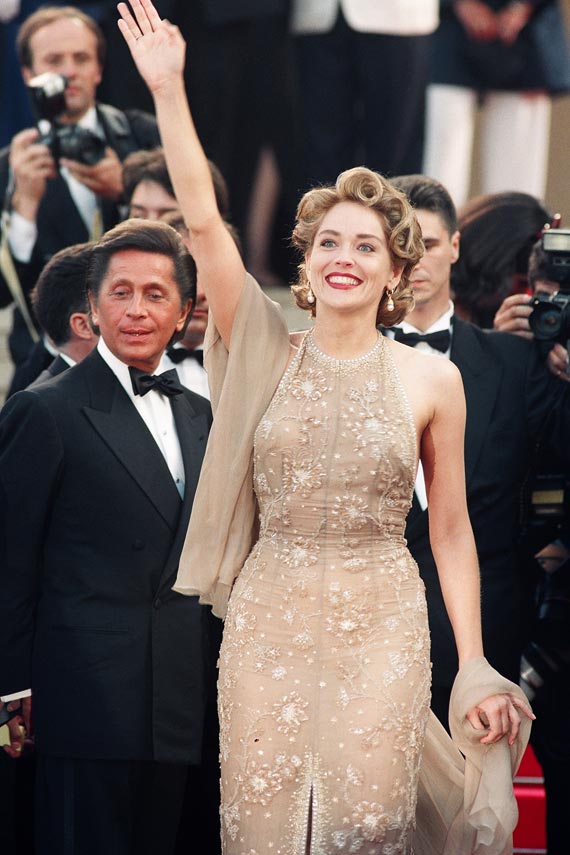
Sharon Stone - 1995
The following year it was Quentin Tarantino’s turn to make a name for himself as a young filmmaker with Pulp Fiction.
Over the years, and notably in 1995, new film genres appeared with more socially engaged screenplays. Considering the camera as a witness to history, these new genres were able to look into certain socio-cultural issues such as the phenomenon of suburban slums with Matthieu Kassovitz’s film La Haine (Hate), which took the Best Director’s prize, or the fight against racism with the film Jungle Fever by the renowned Spike Lee. The release of these new contemporary genres created a buzz in public opinion and was a source of controversy.
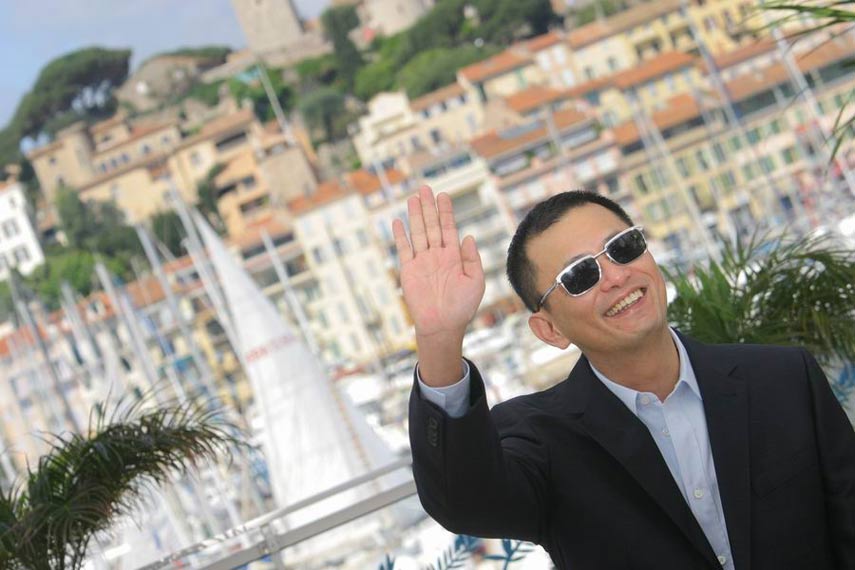
Wong Kar Wai - © Traverso
With its worldwide reputation, the Festival continued to grow and left an indelible mark with such iconic moments as the Italian actor-director Roberto Benigni’s satisfaction, on his knees under the spotlights, after winning for his film Life is Beautiful at the end of the 90s. These films left their mark on the history of worldwide cinema, contributing to the democratisation of various social phenomena such as homosexuality with the film Happy Together by Wong Kar-Wai.
Growing over the years, the Cannes Film Festival celebrated its 50th anniversary in 1997. 1,289 films from all around the world had been part of the official selection since the first Festival in 1946, through 50 years of cinema that have captured the evolution in our societies.
The arrival of the new millennium brought about changes in awareness under the filmgoer’s trained eye. The Festival thus had to encourage relations between cinema professionals and to defend its interests against outside influences. Furthermore, historical events were seared into the public’s mind, in this case the terrorist attacks of September 11, 2001 in the United States, or the bomb threats of 2002, demonstrating the importance of the tensions weighing on the event as it was happening.
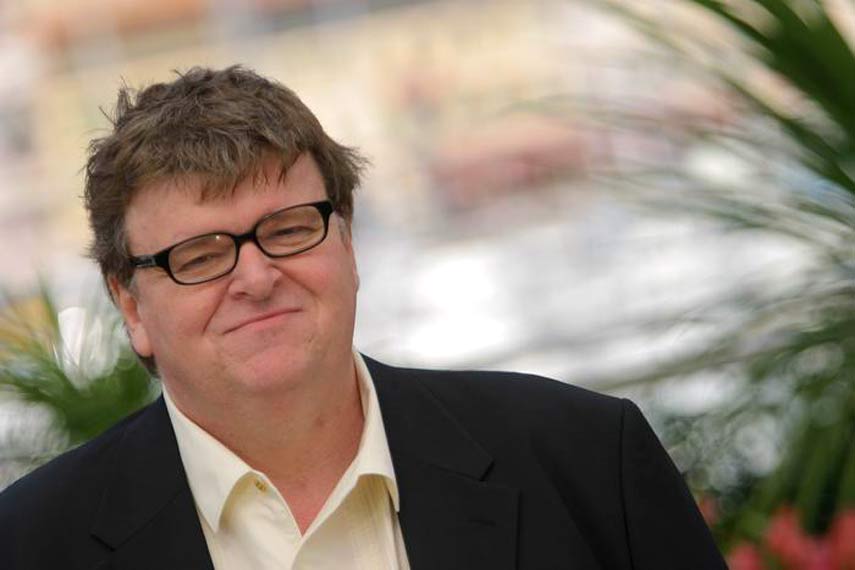
Michael Moore - 2007 - © Traverso
Nonetheless, the Festival was not immune to such media/political phenomena, as can be seen with the release of Michael Moore’s Fahrenheit 9/11 in 2004, with took a position favourable to France during the Iraq conflict and the wrong-minded American strategy.
Thierry Fremaux, who was appointed Delegate General in 2007, said: “The Festival is also a market for international buyers and sellers; today it is the culmination, not the starting point. It used to be that films were discovered here. Now, everything is done upstream and the selections are known to the professionals one month before they are made public. But sales are often finalised after screening at Cannes”.
In 2007, the Festival celebrated its 60th anniversary. It continued to denounce a fragile world in need of unity.
More than ever, Cannes at the start of the 21st century is the premier cinema event in the world. It stands out amongst the other international cinematographic events such as the Berlin or Venice festivals.
And, to further strengthen the indissoluble link that unites Cannes with the most important cultural event in the world, the International Film Festival became the Cannes Film Festival in 2002, under the impetus of Cannes’ Mayor and Member of Parliament, Bernard Brochand.
Coming soon

